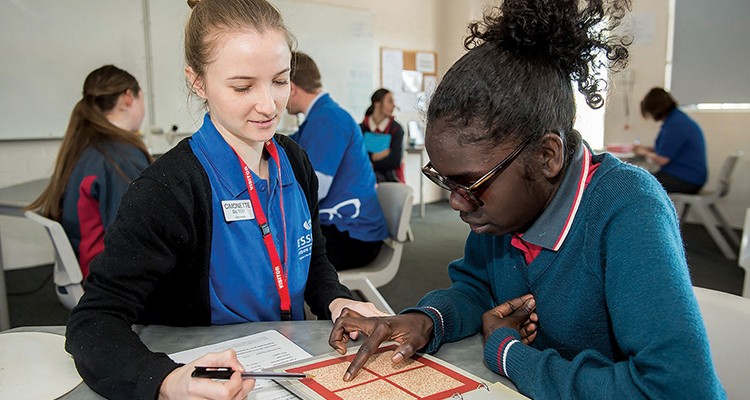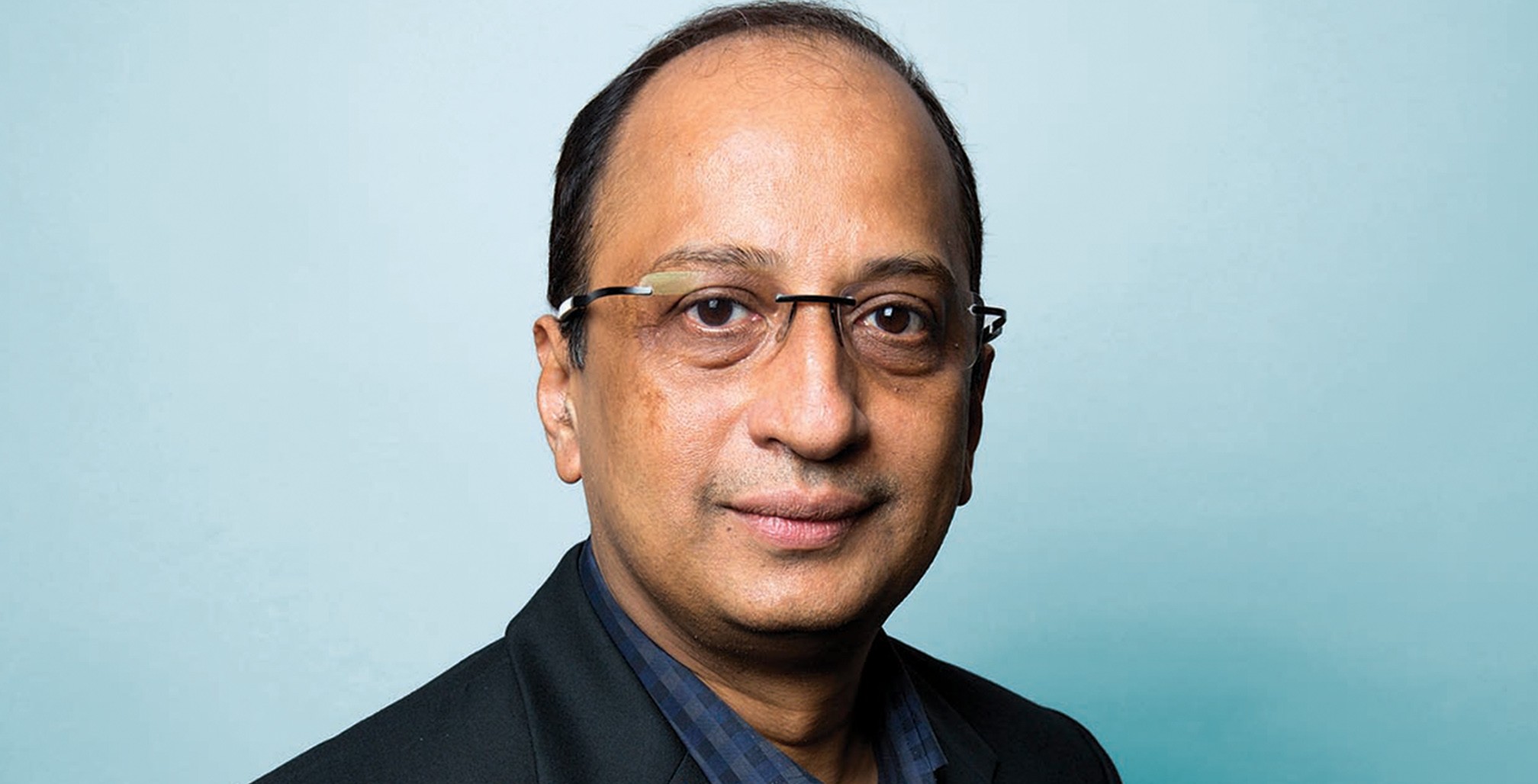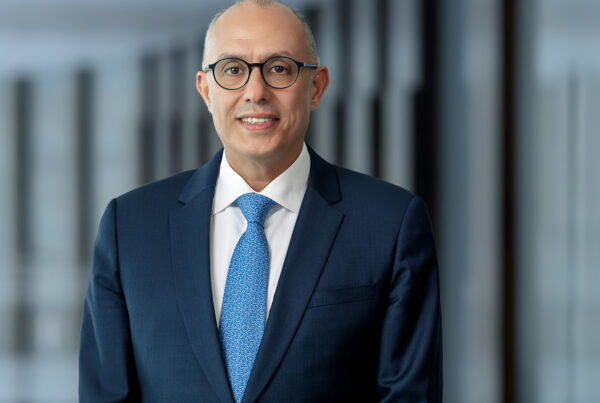A company’s purpose is intangible.
Whether it is focused on driving innovation, improving the lives of customers or building a better world, purpose is the ultimate long-term goal. But in the race for profits and the pressure of competition, that raison d’être can get lost.
“Sometimes, it’s hidden. Sometimes it’s forgotten. Sometimes, people just don’t know about it. And, sometimes, companies get very focused on the short-term and tend to deviate,” says Jayanth Bhuvaraghan, chief mission officer, Essilor International, Singapore. It is his job to ensure the purpose at the heart of this $7.1 billion French ophthalmic optics and visual health organization—improving lives by improving sight—does not suffer from shortsightedness.
Mr. Bhuvaraghan ascended to the role of chief mission officer five years ago, after Essilor CEO Hubert Sagnières and the executive team took stock of how the organization was delivering on its purpose in the more than 100 countries where the company operates. They found that while they were pleased with the success and soundness of Essilor, the organization was falling short with underserved populations.
“At any given point in time, there are a billion people who actively wear and use our products,” Mr. Bhuvaraghan says. “We said, ‘Look, all this is great. We’re doing great as company. We’re financially sound. But there are still 2.5 billion people—one-third of the entire population—who don’t have good vision.’ So we asked ourselves, ‘What are we doing as leaders here?’ We could bring a huge improvement to their lives, to society in general and to us as a business?”
The purpose, they concluded, had to apply to everyone, not just those who could afford it. “Our mission is everyone’s vision,” Mr. Bhuvaraghan says. And he is not speaking hyperbolically. Following the assessment, in 2017, Mr. Bhuvaraghan and his team set a wildly ambitious goal: Eradicate poor vision in one generation. “We would like to see the entire world have good vision by 2050,” Mr. Bhuvaraghan says. “This is our bigger ambition. We’re working toward that, but we can’t do it alone.”
Achieving that goal should be a boon, not a bust, to the bottom line. It is not a philanthropic endeavor for Essilor: Instead, it is a commercial interest, delivering social benefits—and Essilor is not shying away from that. “As long as you’re conducting business in an ethical manner and you can define your efforts through your overarching purpose, there’s nothing wrong with that,” he says.
IQ recently spoke to Mr. Bhuvaraghan about how he makes Essilor’s mission real and meaningful and how he aligns his work with the company’s overall growth strategy.
“Purpose has to be an integral part of the business strategy. You cannot dissociate the two.”
—Jayanth Bhuvaraghan, chief mission officer, Essilor International
IQ: Essilor’s mission is “improving lives by improving sight.” How does that drive longterm growth?
Jayanth Bhuvaraghan: If I slice the [nearly 7.6] billion people in the world into three parts, the first part is about 2 billion people who already wear glasses. But those consumers’ needs and habits are constantly changing. You need to keep track of the consumer insights to come up with products that constantly improve their lives.
For example, people now use a lot of smartphones and computers. There is this harmful blue light that comes out of the screen, which can cause damage to your eyes and lead to accelerated macular degeneration. We have lenses now that cut off this harmful blue light. So we keep track of changing consumer insights and consumer needs, and innovate products in line with what the consumers need as part of what we do.
Then, there is the second slice, which is the 2.5 billion people who are uncorrected today. Here, we work a lot on two things: business model innovation and product innovation.
We know that many people in this group are not aware they need to wear glasses, may not have access to an eye care professional or cannot afford to glasses on the market today, so we had to go back to the drawing board to reinvent new solutions. For instance, we have what we call a “Ready to Clip” spectacle—precut lenses that are interchangeable and can be snapped into the Ready to Clip frames. This allows the vision care provider to immediately customize the pair of eyeglasses to fit the wearer’s prescription and style preference. It was a simple piece of innovation, but it actually helps us to bring innovation in terms of service delivery and affordability.
The other innovation we have produced for this segment is the business model. Take a country such as India, which is very under corrected. More than 500 million people are uncorrected, and most of them are living in small towns or villages. There is no primary health care or vision care in these places. On the one hand, we need trained people. On the other hand, there’s a young population that is educated, but they’re either unemployed or underemployed, and they end up coming to the [bigger] cities to do odd jobs.
We also saw that the government was focusing on skill building, which we also believe in. We put all these things together, and now we take young people to a skill-building center and train them to be primary vision care providers via an initiative called Eye Mitra, which means “Friend of the Eyes” in Hindi. It’s two months of periodical training and 10 months of classroom training. We give them a small grant of about $500 to help them to go back to their villages and set up a micro enterprise—a small optical shop in their own village. It creates businessmen out of unemployed people.
In short, we’re helping create startups. It gives us a commercial benefit by creating a point of sale in a place where nothing exists. We are actually sowing the seeds for long-term, sustainable organic growth. These people’s incomes are growing rapidly because the economy is growing.
They often come back and buy another product, an expensive product, so we’re really creating a customer for life. It’s expanding the market.
The third slice of the population is where we focus on protection—the protection that everyone needs. We work a lot on ultraviolet protection, protection against the harmful blue light and protection for when you’re driving, to cut against the glare, with a product like polarized lenses. If you look at it, innovation for us is a part of our DNA. It’s a necessity for us to stay ahead of the pack and to improve the lives of the entire population of the world.
IQ: How do you ensure that purpose remains authentic and does not become simply purpose-washing?
JB: Purpose has to be an integral part of the business strategy. You cannot dissociate the two. Share on XPurpose statements are meaningful and good when people can relate to them and when they are intrinsically embedded into the business strategy of the company. Every single action the CEO or the board or top management takes should be explained from a purpose point of view. When you are coming to work and doing your thing, you should be in the position to actually explain it in the context of its contribution to the purpose.
I think this is prime. But it’s not just about feeling good. There could be different value that purpose [delivers]. There could be employee engagement. There could be consumer engagement. It builds the equity of the corporate brand. It brings shared value to society. It does a lot of other things, and importantly, it also makes commercial sense. I don’t think we have to feel shy about the commercial benefits of a good purpose. You shouldn’t be shy about saying that, “Look, this helps my business. It helps me grow my customer base.”
“For us, the mantra is simplicity. Whatever we do, it has to be simple. Whatever we do has to be scalable to reach billions of people. And whatever we do has to be impactful.”
—Jayanth Bhuvaraghan
Where we get into these things about purpose-washing is when companies try to attach themselves to a cause that is not really relatable to the company’s mission and purpose. It’s all done with good intentions, I’m sure, but it’s important that if you’re in it for the long term, you will have to find alignment.
IQ: How does Essilor go beyond philanthropy to infuse its purpose into its operational and strategic DNA?
JB: We just don’t believe in grant giving. We believe in program delivery. We believe in being on the ground, creating sustainable programs to make sure that everyone’s needs are addressed. We found that grant giving is easy to do, but then it’s very difficult to measure the impact. The first thing that we did when I started putting together this team to deploy the purpose around the company was to start a BoP Innovation Lab in Singapore. The primary purpose was to look at the needs of the baseof-the-pyramid market and come up with both business and product innovations. It’s a continuous process, so we keep on developing new kinds of products and keep the cost down to satisfy the aspirations of our BoP customers.
One of [our business model innovations] is the Eye Mitra initiative, which is being rolled out everywhere. Altogether, we’ve got roughly 35 or 36 different kinds of business models because, if you’re looking at solving the problems of the world, one size won’t fit all. We adapt or create new business models depending upon the regulatory situation, the situation of the country and the needs.
For us, the mantra is simplicity. Whatever we do, it has to be simple. Whatever we do has to be scalable to reach billions of people. And whatever we do has to be impactful.

IQ: How can executives make purpose real and meaningful?
JB: First of all, it’s about finding out the reason for your existence. Every company definitely has a unique sense of purpose. All the company has to do is go back into its history, unearth its heritage and say, “Why was the company set up? What am I trying to do?” Then, I think the question to ask is, “Is my company aligned with the purpose for which it was set up?” And, finally, “Do I feel strongly motivated enough to actually come to work and deploy this purpose around the world and in my work? What am I doing about it?” I think that last question is very, very important. It can be driven from the top in the sense of giving it a direction, but it can never be an order to follow. It has to come through a personal alignment, through individual employee commitment and collaboration.
IQ: Employee shareholding is a large part of Essilor’s business model. Employees currently hold about 8 percent of the company’s share capital, and last September the company allowed 50 percent of its global employees to become shareholders. How does this support the company’s purpose?
JB: Employee engagement is one of our key drivers. All major decisions, including CEO appointments, are approved by the employees before they even go up to the board. This encourages interest from employees, so they [can] say, “I have a part of the company.” That changes the culture and the way the company and employees behave.
When you get this nice marriage between employees’ intentions and the company’s intentions and strategy, that creates a strong movement. Every one of the employees and every one of our shareholders loves the purpose. I can’t [think of one meeting at] our company that runs without mentioning our purpose. It’s like a national anthem or a bible. We strongly believe in it.
We may sound like missionaries in a sense, but we love to be called that because we are. We are on a mission to fight poor vision and bring vision to everyone in the world.






